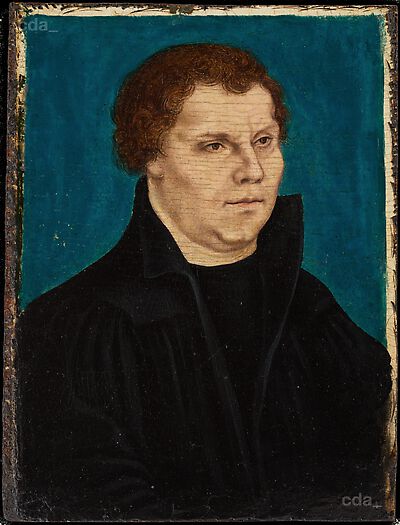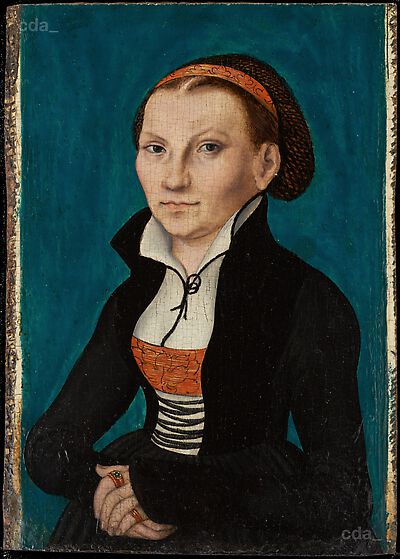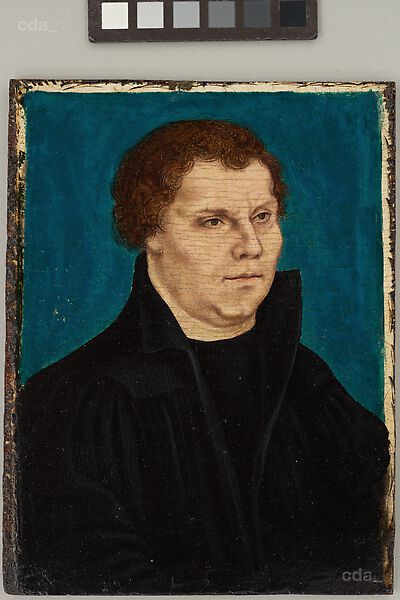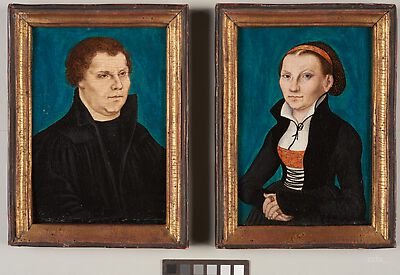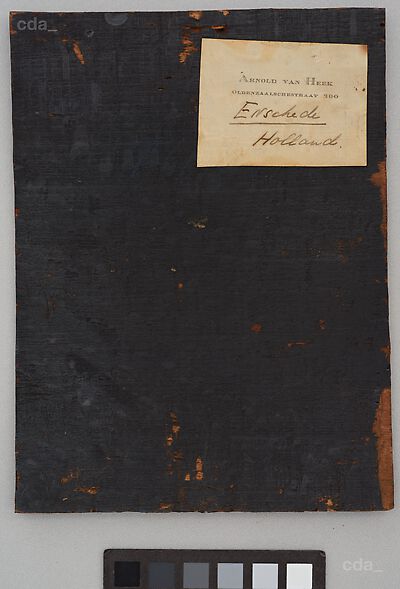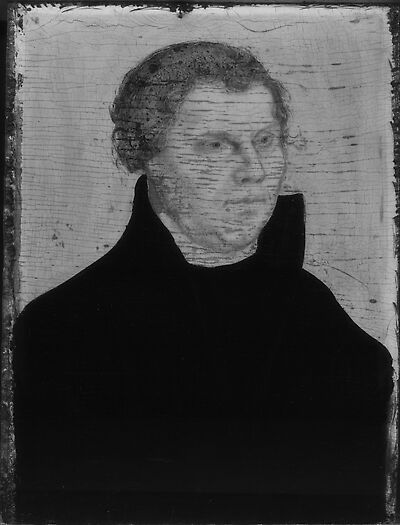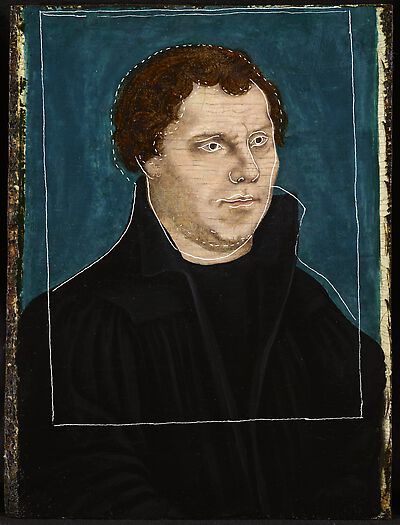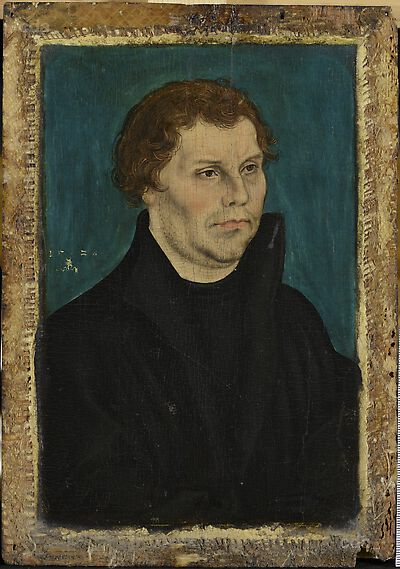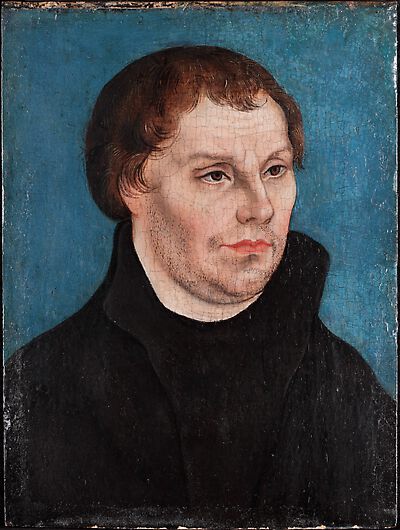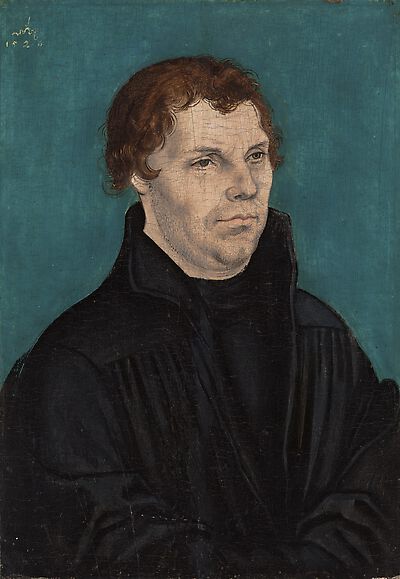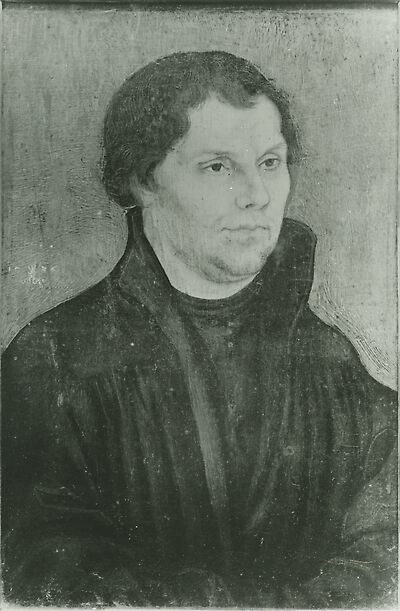Support
- the panel consists of a single beech wood plank (18.5 x 14 x 0.3 cm)
- horizontal direction of grain
- the reverse has been carefully smoothed and the black appplication is probably an original coating
- the edges have been trimmed slightly at a later stage, and only the painted surface at the bottom edge was affected.
The supports [of this painting and its pendant] are Standardformat A beech wood panels. Beech wood panels of this size were used frequently in the Cranach workshop from the 1520s. The original size of this painting probably corresponded with that of the double portrait in Eisenach (DE_WSE_M0065, 22.6 x 16 cm). A narrow frame was probably glued to the originally wider exposed edges of the panel. Although the direction of the grain differs on each panel it is possible that they we conceived as a pair.
Ground and Imprimatura
- white ground
- a barbe is present along the left, top and right edges
- here the ground was partially removed with a sharp bladed tool
Underdrawing
- an underdrawing is not readily visible in the infrared reflectograph
- isolated contour lines detected in the infrared reflectograph may have been executed during the painting process
Numerous paintings exist by Lucas Cranach or from his workshop where an underdrawing could not be detected employing infrared reflectography.
Paint Layers and Gilding
- using XRF the elements in the paint were detected and in combination with a comparison of their optical characteristics the following pigments were identified: lead white, lead-tin-yellow, iron oxide, vermilion, azurite, carbon black
- The identification of calcium suggests the use of calcium carbonate (chalk) in the ground or as fill material.
- In addition titanium, zinc and chrome were detected at various measurement points. This probably suggests the presence of retouches containing titanium white, zinc white and chrome based pigments.
- The flesh paint was applied in pale flesh tones (lead white, vermilion, iron oxide, azurite) and brown shadow tones were modulated with strokes and some dabs. The confidently drawn details like eyelashes and eyebrows were added subsequently with a fine tipped brush. Occasionally the tip has split to produce fine double lines.
- The pigments (azurite and lead white) employed for the blue background paint are finely ground. The paint exhibits an uneven brush application.
- Individual forms were painted with clear boarders and only minimal overlapping of the paint zones. There are no major changes in the composition.
The pigments identified were employed in European panel painting before 1750 and also frequently used in the Cranach workshop. The technique of application corresponds with the usual practice in the Cranach workshop. Forms and designs can be found on other works produced in the Wittenberg workshop from about 1526. Although the original quality of the execution has been compromised by the condition of the painting in areas like the eyes and the hair and Katharina von Bora's dress it corresponds with the quality observed on other works by Lucas Cranach the Elder. Split brushstrokes can also be found in the execution of the eyelashes and eyes on the double portrait in Eisenach.
[unpublished examination report, Heydenreich 2015-08]
